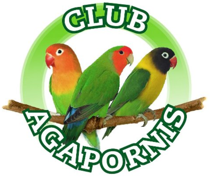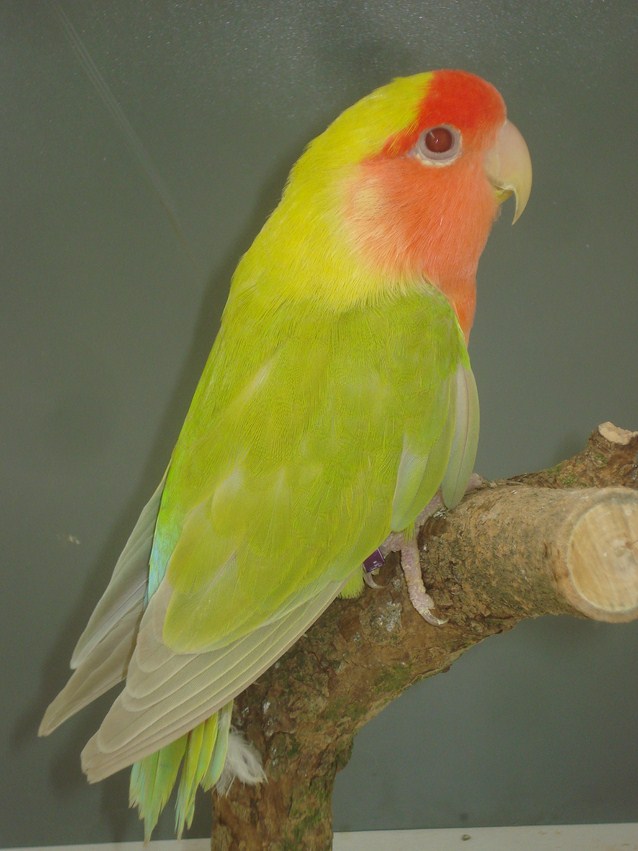

Welcome to this site
which isdifferent from other sites on roseicollis.
Indeed, there are already many site describing roseicollis or even agapornis in general, but the purpose of it is
- First to introduce specific mutations roseicollis I'm trying to breed, rare or very rare in France or even Europe.
- Secondly, to show you a large part of the possible combinations and find the indices of each mutation that makes up a particular combination.
-Indeed, passionate by roseicollis since my youngest age, I discovered pictures on various magazines and websites, lot of mutations that I did not have, that we saw little or no in ads, thatI finished to find. It started with orange masks and marbled, then turquoise. Much later I found first opaline and at the same time the "blue", which is a selection of turquoise. But more or less the same time came in my collection rarest color that I had not.
I was the goal to "collect" this colors, and that it has now done.
The different farm visits and meetings that I have done during the search of these birds helped me learn / go deeper genetics and identify different possible combinations
The mutations I want to talk about here:
- the paleheaded (pink mask)
- the recessive pied
- the pale fallow
- bronze fallow
- the dilute
The palehead is a mutation that affects the color of the mask making pink instead of red, brightens the green bird in slightly bluish. It is little known to the public, and unappreciated because the colors are not great, but still some pretty cool combinations, depending the opinion of each.
I've never seen in France so far.
The recessive pied is definitely my favorite, which gives a yellow color on the majority of the body of the bird with green spots, yellow-white flight feathers. The problem is that sometimes it takes a little time to get to be the first young, otherwise nothing special.
It is a color that begins to make its appearance in France, friends even presented some specimens in competitions.
The pale fallow is a bird with yellow chest and greenish red eyes, not the most attractive, but some combinations are beautiful. I had the opportunity to see many different combinations, including aqua, opaline, opaline aqua, turquoise and even "blue" etc ...
This color has become quite easy to find with our neighbors Belgian or Dutch, became easier to breed.It is very rare in France today
The bronze fallow, certainly the hardest mutation to breed mutation, surely one of the reasons it is found in a limited number of farms, in more the fact that its color is near to the cinnamon.
My first year with this color was a success, and several years without young chess or even attempts to breed.
The dilute, the rarest mutation at the moment, since currently there is only 4 have in Europe, and some Brazilian farmers. To the untrained eye warned, dilute is confused with PallidIno, but for my eyes, dilute is significantly prettier. Is an infallible leg color gray in the dilute, then it is more or less pink in the pallid.
The problematic of this color is that currently, females make eggs can not hatch or without calcium (soft eggs) or without yellow, in my case, with bubbles instead of the chamber incubation. This is probably due to high inbreeding, given the few remaining specimens.
Nevertheless, it seems that some young hatched eggs from females of one of the owners of this color can be the basis to start new lines ?
To learn more about these mutations and their history, I invite you to visit the french site 
